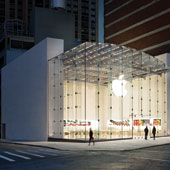The Surprising Impact of Fashions in Information Technology
Large companies that invest in trendy IT innovations may see their reputations — and CEO compensation — increase the next year.

Enthusiasm for many information technologies (IT) developed for business use often mimics the ebb and flow of fashions. When a research team I led analyzed press coverage of various IT innovations over the period between 1971 and 2002, we found that media coverage of many innovations tended to grow over time to reach sharp peaks in popularity that didn’t last long — in a manner reminiscent of the spiky life cycles of fads and fashions in the apparel and entertainment industries. While fashions in what people wear or how they have fun may seem trivial to a business audience, our research has shown evidence of some not-so-trivial consequences of IT fashions in the business world.
From the Fortune 500 lists between 1994 and 2003, we selected 109 companies that both appeared on Fortune’s America’s Most Admired Companies lists and responded to an annual survey that provided information about their budgeted investments in eight IT or IT-enabled innovations that experienced a period of fashionability. (The eight innovations were: application service provider (ASP), business process reengineering (BPR), customer relationship management (CRM), data warehouse, e-commerce, enterprise resource planning (ERP), groupware, and knowledge management.) The sample of 109 companies was diverse and largely representative of Fortune 500 companies in terms of size, performance and industry distribution.
In our study, which was reported in detail in the March 2010 issue of MIS Quarterly, we found that the more often a company’s name occurred in articles that also mentioned one of the IT innovations that was increasing in popularity at the time, the higher the reputation score the company received in the list of America’s Most Admired Companies the following year. Interestingly, this effect held true even if the company did not actually invest in the technology at the time. Specifically, as the name associations increased 1%, the company’s reputation score increased 0.52% in the following year. When a company actually invested in fashionable IT innovations, every $1 million investment was associated with a surge of 0.66 points in the following year’s reputation score, measured on a scale of 1 to 10.
RELATED RESEARCH
- P. Wang, “Chasing the Hottest IT: Effects of Information Technology Fashion on Organizations,” MIS Quarterly 34, no. 1 (March 2010): 63-85. The study was supported in part by the National Science Foundation under grants IIS-0729459 and SBE-0915645.
- E. Abrahamson and G.
